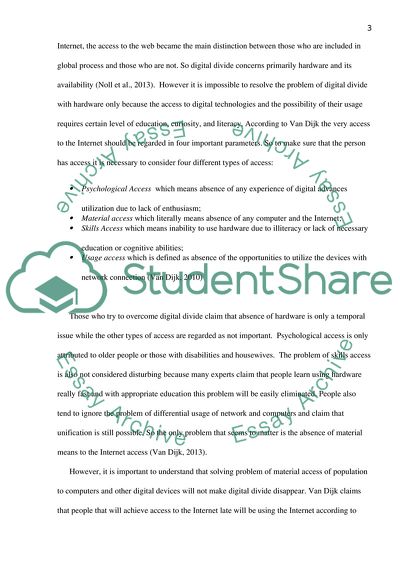Cite this document
(Digital Divides Are an Inevitable Feature of Contemporary Communication Society Literature review Example | Topics and Well Written Essays - 3000 words, n.d.)
Digital Divides Are an Inevitable Feature of Contemporary Communication Society Literature review Example | Topics and Well Written Essays - 3000 words. https://studentshare.org/social-science/1854029-digital-divides-are-an-inevitable-feature-of-contemporary-communications-systems-discuss
Digital Divides Are an Inevitable Feature of Contemporary Communication Society Literature review Example | Topics and Well Written Essays - 3000 words. https://studentshare.org/social-science/1854029-digital-divides-are-an-inevitable-feature-of-contemporary-communications-systems-discuss
(Digital Divides Are an Inevitable Feature of Contemporary Communication Society Literature Review Example | Topics and Well Written Essays - 3000 Words)
Digital Divides Are an Inevitable Feature of Contemporary Communication Society Literature Review Example | Topics and Well Written Essays - 3000 Words. https://studentshare.org/social-science/1854029-digital-divides-are-an-inevitable-feature-of-contemporary-communications-systems-discuss.
Digital Divides Are an Inevitable Feature of Contemporary Communication Society Literature Review Example | Topics and Well Written Essays - 3000 Words. https://studentshare.org/social-science/1854029-digital-divides-are-an-inevitable-feature-of-contemporary-communications-systems-discuss.
“Digital Divides Are an Inevitable Feature of Contemporary Communication Society Literature Review Example | Topics and Well Written Essays - 3000 Words”. https://studentshare.org/social-science/1854029-digital-divides-are-an-inevitable-feature-of-contemporary-communications-systems-discuss.


